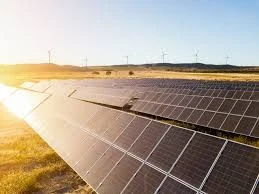300w solar panel price
Understanding the Cost of 300W Solar Panels
As the world continues to seek sustainable energy solutions, solar power has emerged as a popular choice for both residential and commercial applications. Among various solar panel options, the 300W solar panel has gained significant attention due to its efficiency and adaptability. However, many potential buyers are often concerned about the pricing of these solar panels. In this article, we will explore the factors influencing the cost of 300W solar panels and provide insights into making an informed purchasing decision.
Factors Influencing the Price
1. Quality and Brand The price of solar panels can vary widely based on their brand and the quality of materials used. Renowned brands that have established a reputation for durability and efficiency may charge a premium. While cheaper options are available, they may compromise on quality, potentially leading to higher long-term costs.
2. Technology and Efficiency Solar panels come in different technologies, including monocrystalline, polycrystalline, and thin-film. Monocrystalline panels are typically more efficient and space-saving, but they tend to be more expensive. On the other hand, polycrystalline panels are more affordable and suitable for larger spaces where surface area is not a constraint.
3. Market Dynamics The solar industry is influenced by global supply chains, tariffs, and local incentives. Prices can fluctuate based on changes in policies, trade agreements, and the availability of raw materials. Keeping an eye on market trends can help consumers decide the best time to purchase.
300w solar panel price

4. Installation Costs The price of the solar panel itself is only part of the total cost of a solar energy system. Installation costs can add significantly to the overall expense. Depending on regional labor rates, the complexity of the installation, and additional components like inverters and mounting systems, prices can vary. It’s essential to obtain multiple quotes to understand the installation landscape.
5. Incentives and Rebates Many governments offer incentives or rebates for solar energy systems, which can considerably reduce upfront costs. For instance, tax credits and renewable energy certificates can offset the initial investment. Researching available local programs can provide significant savings.
Making an Informed Decision
When considering the purchase of 300W solar panels, it is crucial to assess your energy needs and evaluate the size of your installation area. Conducting a comparative analysis of different brands and technologies can help you identify the best option within your budget. Additionally, consulting with a solar energy specialist can provide customized recommendations based on your specific circumstances.
Conclusion
In summary, the price of 300W solar panels is influenced by various factors, including brand quality, technology, market dynamics, installation costs, and available incentives. Understanding these factors can empower consumers to make informed decisions, leading to effective and sustainable energy solutions. As you embark on your solar energy journey, thorough research and planning will ensure that you choose a solar panel system that meets your needs while contributing to a greener future.
-
String Solar Inverter: The High-Efficiency Solution for Smart Solar EnergyNewsJul.14,2025
-
Revolutionizing Rooftop Energy with the Power of the Micro Solar InverterNewsJul.14,2025
-
Power Independence with Smart Off Grid Solar Inverter SolutionsNewsJul.14,2025
-
On Grid Solar Inverter: Powering the Future with Smart Grid IntegrationNewsJul.14,2025
-
Monocrystalline Solar Panels: High-Efficiency Power for the Future of Clean EnergyNewsJul.14,2025
-
Bifacial Solar Panel: A Smarter Investment for Next-Generation Energy SystemsNewsJul.14,2025







